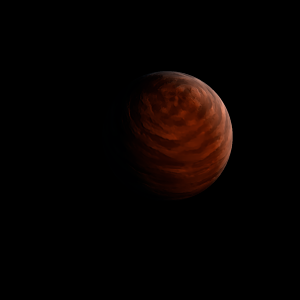|
|
Space Astro
|
Info for exoplanet "Xozeno-zef"
| Scientific (actual) data |
|---|
| Name | HD 100777 b |
| Planet status | Confirmed |
| Mass sini | 1.16 |
| Orbital period | 383.7 |
| Semi major axis | 1.03 |
| Orbit eccentricity | 0.36 |
| Angular distance | 0.019508 |
| Discovered | 2007 |
| Updated | 2014-08-30 |
| Omega | 202.7 |
| Tperi | 2453460 |
| Publication | Published in a refereed paper |
| Detection type | Radial Velocity |
| Star name | HD 100777 |
| Right ascension | 173.97° |
| Declination | -4.76° |
| Mag v | 8.42 |
| Star distance | 52.8 |
| Star metallicity | 0.27 |
| Star mass | 1 |
| Star sp type | K0 |
| Star age | 2 |
| Star temperature | 5582 |
| Wikipedia article | HD 100777 b |
Back
| |
| Fictional info (?) |
|---|
| Suggested name | Xozeno-zef |
| Planet type | Cold planet |
| It is a cold planet planet with a mass one-thousandth that of HD 100777, but two-and-a-half times that of all the other planets in its solar system combined.
The polar regions are constantly below 279°K (6°C).
.
The two polar ice caps appear to be made largely of water.
A prominent result is the "great yellow spot", a giant storm that is known to have existed for centuries since it was first observed by radar. |
| Atmosphere | Formaldehyde | 59% |
| Nitrogen | 24% |
| Oxygen | 11% |
| Carbon monoxide | 5.8% |
| Methane | 0.01% |
| Argon | 0.0096% |
| Atmospheric pressure | 4 bar |
 |
| No known satellites |
| Google search for Xozeno-zef |
|
Website by Joachim Michaelis
|
|
|
|